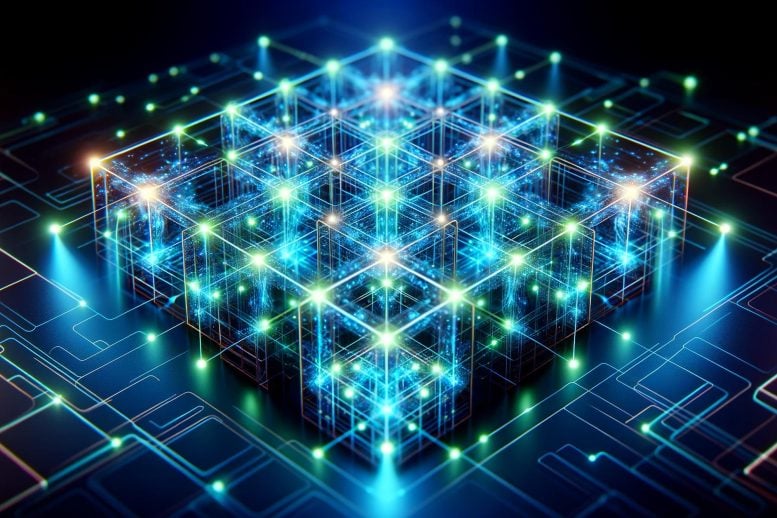
RIKEN Center for Quantum Computing has developed a new quantum error correction method, the “many-hypercube codes,” which promises efficient and parallel error correction for fault-tolerant quantum computing.
This method utilizes a complex geometric code structure, capable of achieving high encoding rates and parallel processing capabilities akin to those in classical high-performance computing, making it a potential breakthrough in quantum computing.
Many-Hypercube Codes
In work published on September 4 in the journal Science Advances, Hayato Goto from the RIKEN Center for Quantum Computing in Japan has proposed a new quantum error correction approach using what he calls “many-hypercube codes.” This approach, which turns out to have an elegant geometry, could help realize extremely efficient error corrections and contribute to highly parallel methods that will allow fault-tolerant quantum computing, the next stage in the evolution of quantum computers.
According to Goto, “Thanks to recent experimental progress, there is now great hope that we will be able to build fault-tolerant quantum computers, meaning quantum computers that can correct errors and surpass the power of conventional computers on certain tasks. To achieve this, however, it is important to develop efficient quantum error correction.”
Challenges in Quantum Error Correction
Scientists have proposed many different methods of error correction over the last several decades. The conventional approach to quantum error correction is typically based on encoding a single logical qubit—the qubit being the equivalent of a bit on a classical computer—onto many entangled physical ones, and then using a decoder to retrieve the logical qubit from the physical ones.
However, scalability is a problem with this approach, since the number of physical qubits required goes up enormously, and this results in huge resource overheads.
To overcome this problem, high-rate quantum codes, such as quantum low-density parity-check codes, have been considered. However, with this approach the logical gates, which make calculations possible, have to be set up quite sequentially rather than fully parallel, making them less efficient time-wise.
Innovations in Quantum Computing
As a means to remedy this, Goto proposed using an approach that he calls “many-hypercube codes.” Specifically, it is a method with a complex name—high-rate concatenated quantum codes—and what is innovative is that the logical qubits can be visualized mathematically as forming what is known as a “hypercube”—a type of shape, including squares and cubes as well as higher-order shapes such as the tesseract. The beautiful mathematical and geometric structure of the code is remarkable, as most high-rate quantum codes have complicated structures.
Goto emphasizes that in order for the new codes to result in higher performance, he needed to develop a novel dedicated decoder that could interpret the result from the physical qubits. This innovative technique is based on level-by-level minimum distance decoding, which allows for high performance. Unlike other similar methods, it also allows for logical gates to be put in parallel rather than in a series, which makes the system analogous to parallel processing in classical computers, leading Goto to call it “high-performance fault tolerant computing” as an analogy to “high-performance computing” which is used for massively parallel computing.
Achieving High-Performance Fault Tolerance
The work paid off. The codes achieve an encoding rate—a number that indicates the ratio between logical and physical qubits—of up to 30% which Goto says appears to be the world’s highest among the codes used for fault-tolerant quantum computing. And even with this high rate, the performance is comparable to conventional low-rate codes.
Goto says, “In practice, this code could be implemented with physical qubit systems such as laser-trapped neutral-atom qubits.”
Reference: “High-performance fault-tolerant quantum computing with many-hypercube codes” by Hayato Goto, 4 September 2024, Science Advances.
DOI: 10.1126/sciadv.adp6388
Never miss a breakthrough: Join the SciTechDaily newsletter.